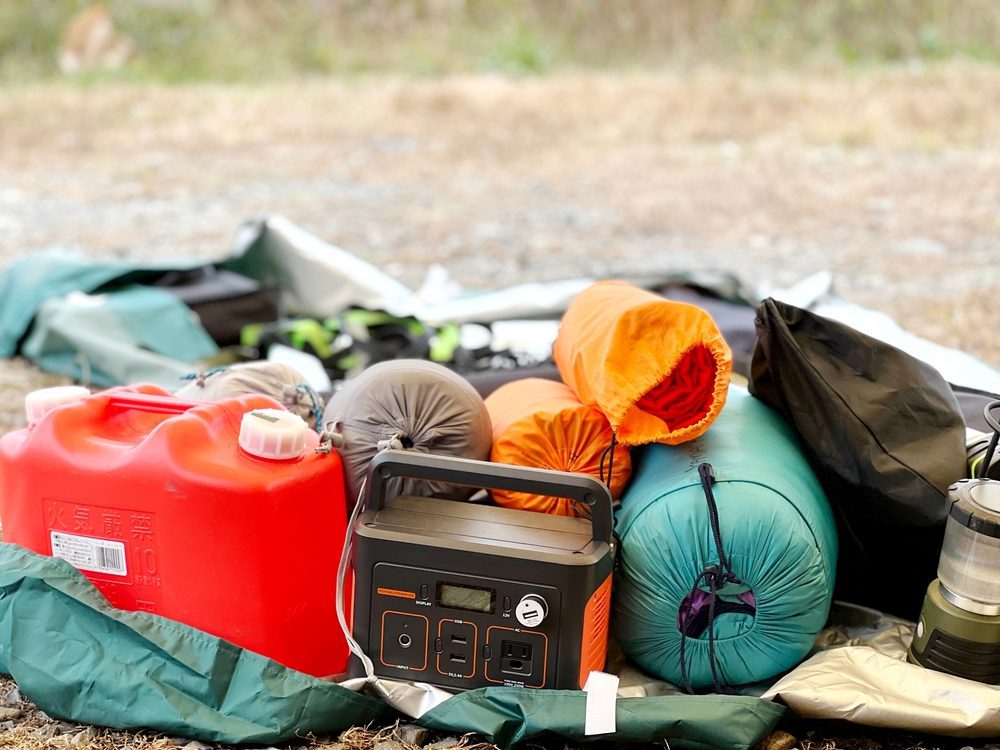How to pack for camping adventure? Packing effectively can make or break your experience. Many campers face the challenge of overpacking, forgetting essentials, or being unprepared for weather changes. Neglecting these aspects can lead to discomfort and potentially dangerous situations.
Drawing from our extensive camping experience and data-driven insights, we’ll guide you through the essentials, ensuring you’re prepared for every scenario. Whether you’re a solo backpacker or a family on a weekend getaway, our tailored advice will resonate with your unique camping style.
Join us as we delve into the art of smart packing, your first step towards a memorable outdoor journey.
Table of Contents
How To Pack For Camping Backpack: Tips and Tricks

Understanding center of gravity and its impact on backpack weight distribution
The key to comfortable backpack carrying is understanding how to properly distribute the weight inside your pack. You want the bulk of the weight high and tight against your back, which keeps the load centered over your hips. This places less strain on your back and shoulders.
Positioning the weight too low or too far away from your back pulls your center of gravity backwards. That forces your body to work harder to counterbalance the pack, quickly leading to fatigue and loss of stability on the trail. Take the time to carefully organize and pack your backpack so the heavy items sit closest to your upper back.
Keeping heavy gear close to your back
Food, water, stove fuel and other dense gear should go in the main compartment, closest to the part of the pack that sits against your back. Medium weight items can go towards the bottom and sides. Lightweight and infrequently needed items can go in the top and outer pockets.
If your sleeping bag and pad don’t fit down inside the main compartment, strap them directly underneath the pack’s lid instead of lashing them to the bottom or sides of the frame. This still keeps them high and centered over your hips.
Avoiding top-heavy or bottom-heavy packing
Try to avoid carrying most of the load either high in the pack or low towards the bottom. Too much weight up high raises your center of gravity and makes you less stable. Too much weight down low pulls back severely on your shoulders.
Before hitting the trail, walk around camp with your fully loaded pack for a few minutes. Pay attention to any sagging, loose straps or uncomfortable pressure points so you can adjust the contents or straps as needed. The goal is an evenly balanced, comfortable carry for the duration of your trip.
Essential Camping Gear Checklist
Kitchen essentials
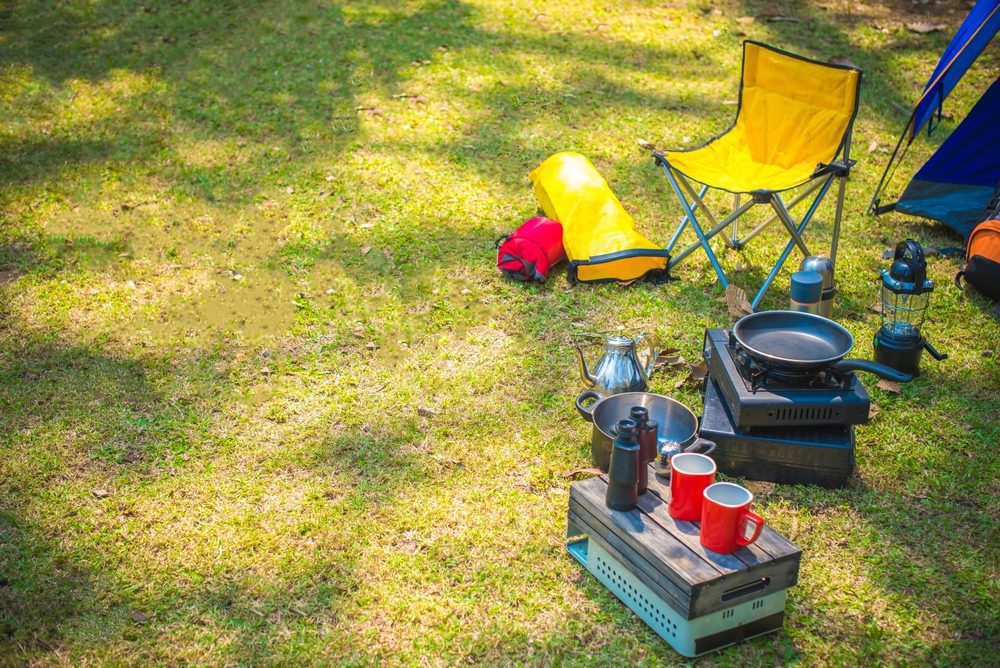
Having the necessary kitchen gear will make cooking meals and cleaning up easier when camping. Here are some recommended items to pack:
- Camp stove and fuel
- Pot, pan and kettle
- Plates, bowls, mugs and utensils
- Cup, knife, cutting board
- Lighter, matches, fire starters
- Dish soap, scrubber and towel
- Trash bags
- Food storage containers
- Aluminum foil
- Ziploc bags
Sleeping gear
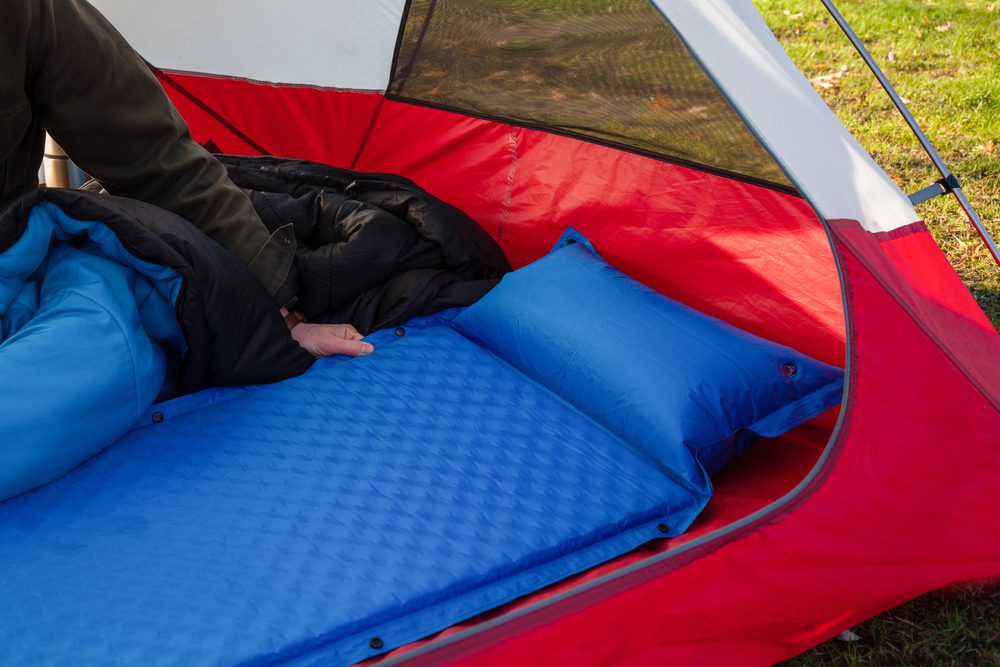
Quality sleeping gear is essential for getting necessary rest on a camping trip. Here are some key items:
- Tent
- Sleeping bags and pads
- Pillows
- Extra blankets
- Tarp and rope
- Hammock (optional)
Clothing and personal items
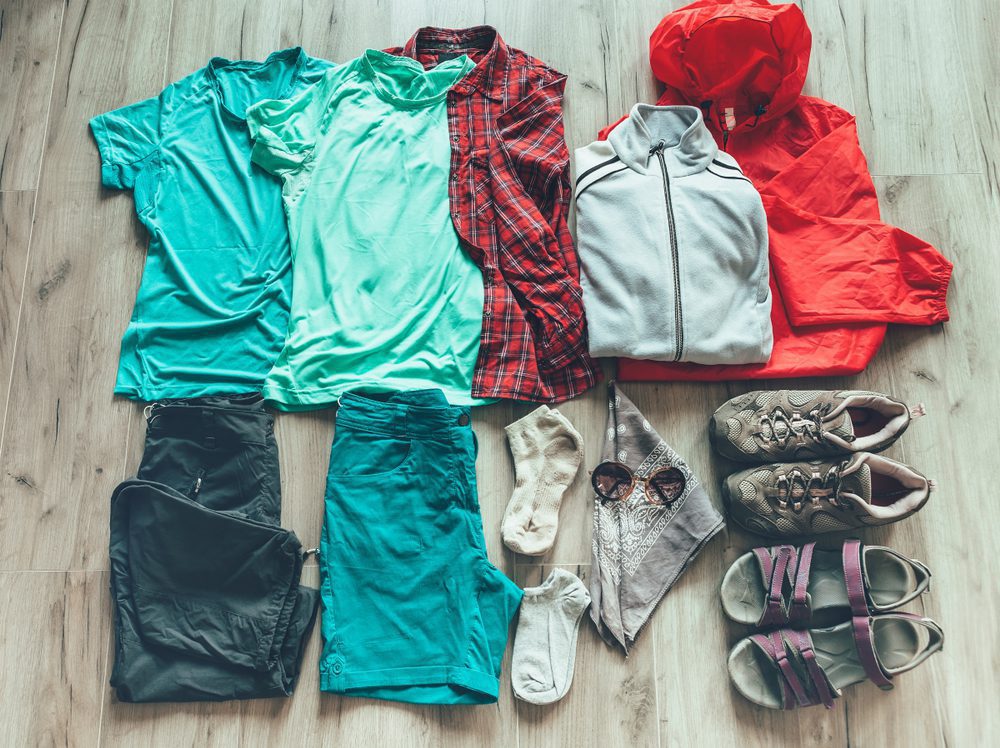
Prepare for various weather conditions and staying clean and healthy with these clothing and personal gear items:
- Hiking shoes/boots
- Socks and underwear
- Pants and shorts
- Shirts
- Fleece and down jackets
- Rain gear
- Hat and gloves
- Toilet paper
- Soap, toothbrush and towel
- Medications
Tools and equipment
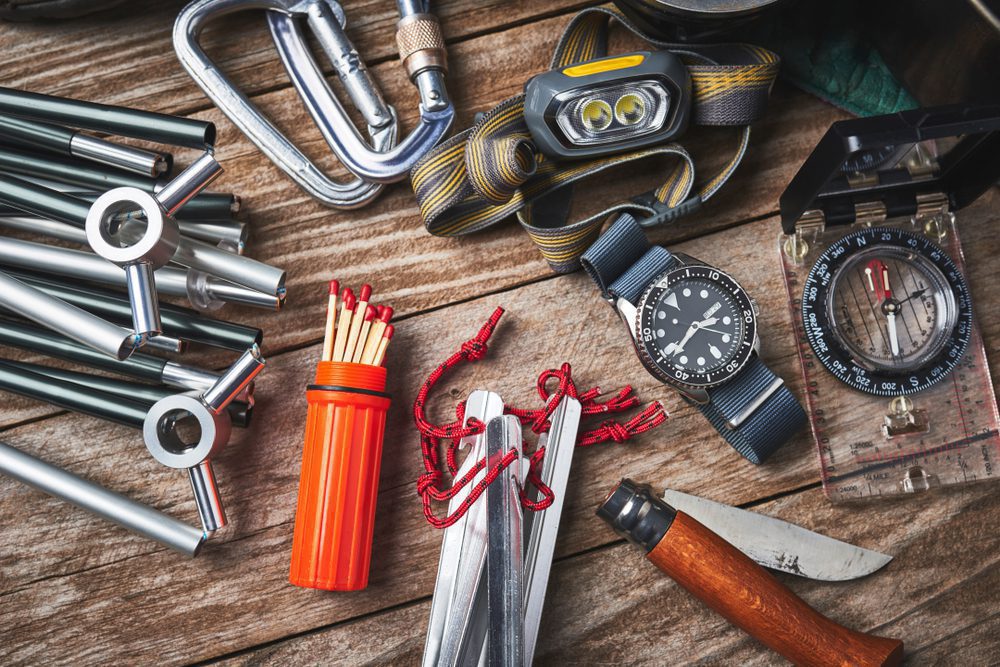
It helps to be prepared with gear for navigating the terrain, making repairs and staying safe:
- Backpack and daypack
- Hiking poles
- Multi-tool or knife
- Paracord
- Duct tape
- Compass and maps
- Flashlight or headlamp
- Batteries
- Lighter and fire starter
First aid kit
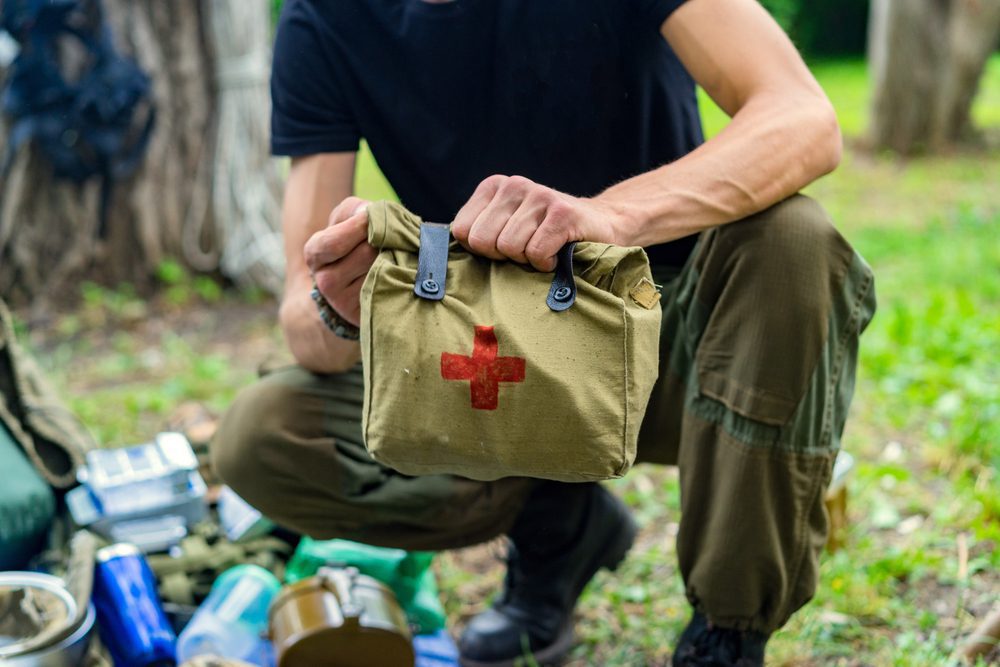
Having basic first aid supplies on hand can tend to scrapes and minor injuries:
- Bandages
- Gauze
- Medical tape
- Antibiotic ointment
- Anti-inflammatory medication
- Thermometer
- Tweezers
- Scissors
Properly Loading Your Backpack
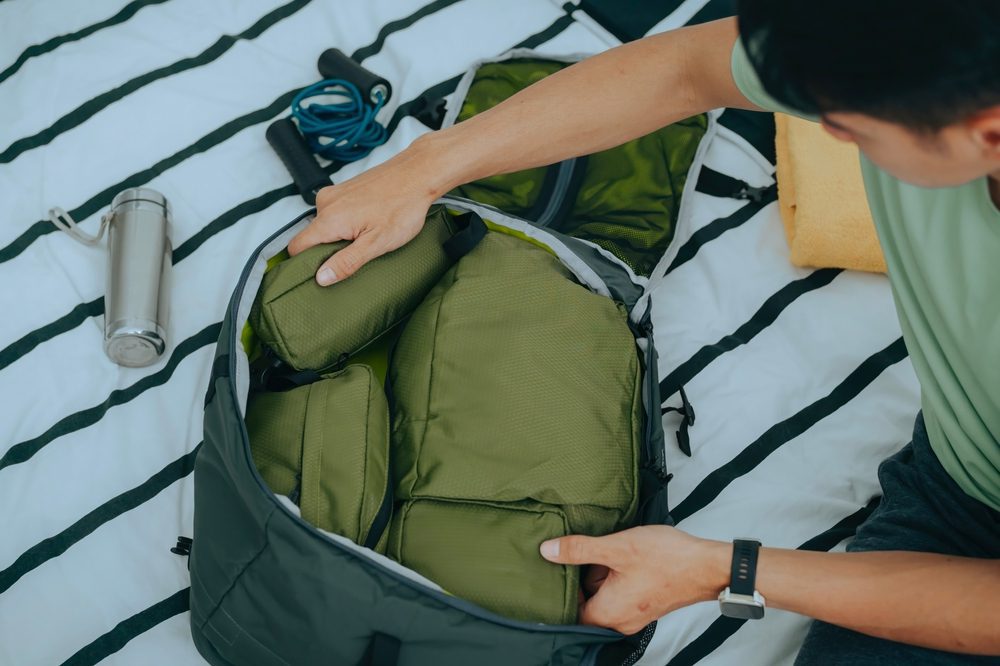
Organizing gear for easy access
Pack your backpack strategically so needed items are quickly accessible. Keep essentials like rain gear, extra layers, water, snacks and maps towards the top or in outside pockets. Store items you won’t need until camp like tent, sleeping bag and clothing towards the bottom and middle.
Use stuff sacks or packing cubes to organize and compress clothing inside your pack. Group like items together – toiletries in one bag, cooking gear in another, etc. Waterproof, sealable bags help keep items dry if it rains or you drop your pack in water.
Distributing weight evenly
Be conscious of balancing heavier items on right and left sides as you load up your backpack. This keeps weight evenly distributed across your shoulders, hips and back. If you notice one side feeling heavier as you hike, stop to reorganize the contents.
If carrying bulky gear like tents or bear canisters, place them centered vertically against your back. Positioning the weight close to your spine helps transfer it down through your hips rather than pulling back on your shoulders.
Adjusting straps for comfortable fit
Properly adjusting your backpack’s straps is key for carry comfort. Make adjustments with the pack on and loaded, tightening the hip belt and shoulder straps just snug enough to stabilize and support the load.
Keep load lifter straps tightened just enough so the top doesn’t sag backwards. Don’t overtighten shoulder straps – that can restrict circulation. Fine tune adjustments as needed while hiking until the pack feels balanced and secure.
Maintaining balance while hiking
Pay attention to your balance and gait while trekking with your loaded backpack, especially on uneven terrain. Lean slightly forward from your ankles to counteract a heavy load. Take shorter strides for better stability.
Use hiking poles to improve traction and help absorb impact on knees and ankles when going downhill. Rest and adjust your pack if you feel off-balance or strain on your body from the weight while hiking.
Tips for Compact and Lightweight Packing
To reduce pack weight and size, opt for multi-purpose, lightweight gear and clothing that layers. Rely more on items that work for a variety of situations rather than bringing specialized tools and extras.
Look for tents, sleeping bags, pads and packs made from modern ultra-light materials that compact down small. Choose minimal, quick-drying clothing and footwear. Skip heavy cans and bottles by repackaging food in lightweight bags.
Special Considerations for Bird-Watching Campers
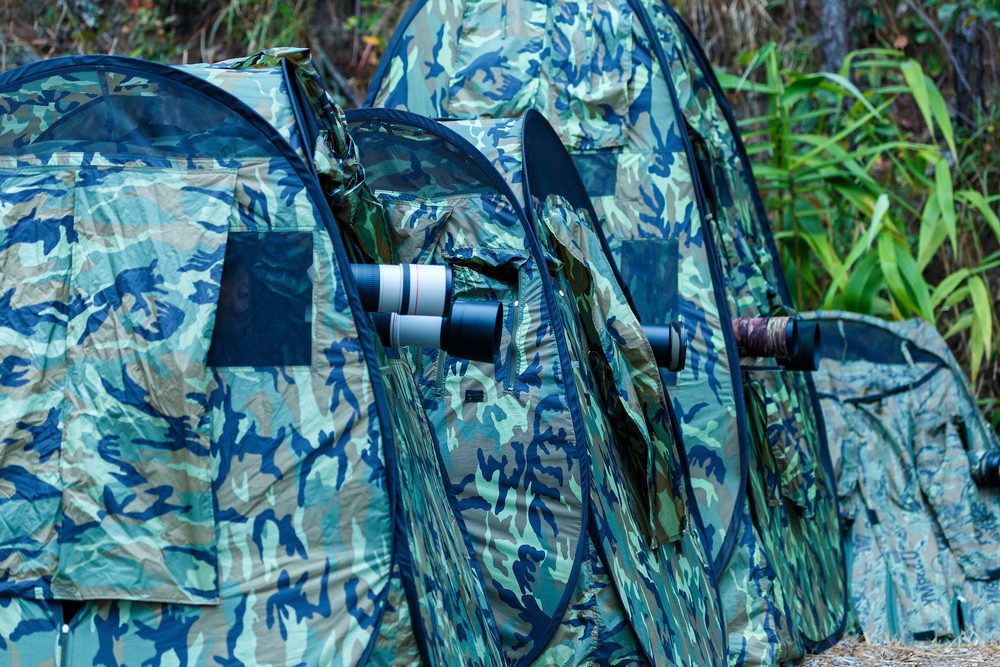
Bird-Watching Equipment Essentials
In addition to typical camping gear, birders need specialized equipment for spotting and identifying their feathered friends:
- Binoculars – Lightweight and waterproof models like 10×42 are ideal
- Spotting scope – Compact variable zoom scope for distant viewing
- Field guides – National Audubon Society and Sibley guides are top choices
- Birding app – Download regional bird ID and bird call apps
- Notebook and pen – Record sightings and field notes
Blending Camping with Bird-Watching
Look for campsites near prime bird habitats like forests, wetlands and shorelines. Pack quietly and wear muted colors to avoid disturbing birds. Rise early to spot birds at first light when feeding activity peaks.
Scout birding hot spots at dawn or dusk when more species come out. Listen for bird calls to help locate them. Move slowly and pause frequently when attempting to photograph birds to not startle them. Positioning near food, water or cover increases sighting chances. Or if you are interested to find dispersed camping you can find this dispersed camping guide
Safety and First-Aid Preparedness
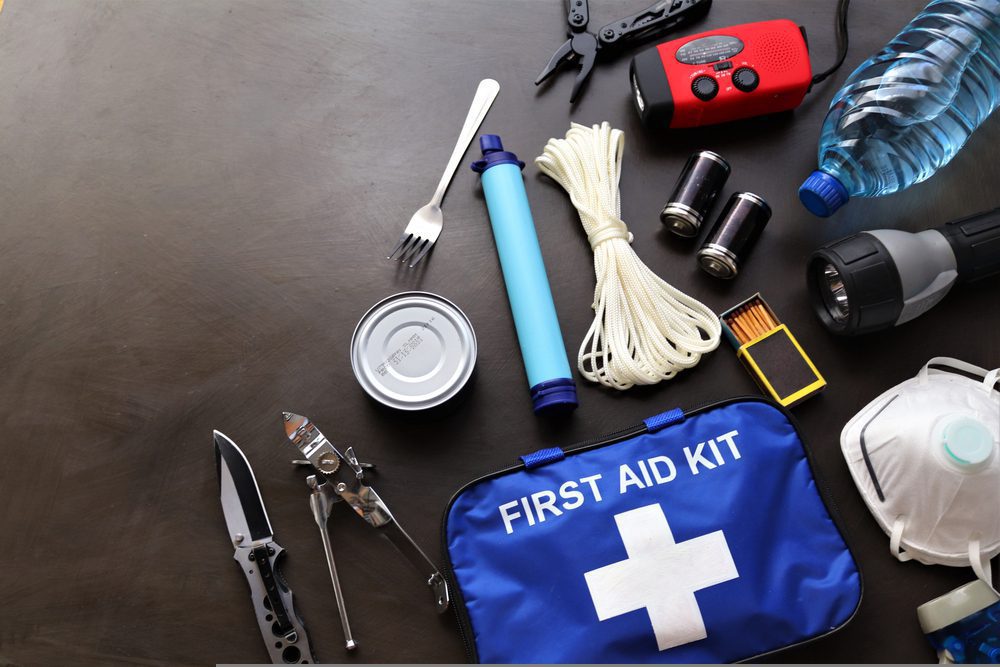
Essential First-Aid Supplies
Be prepared to treat minor injuries and stabilize major ones with these fundamental first-aid items:
- Various bandages and gauze pads
- Antibiotic ointment
- Antiseptic wipes
- Medical tape
- Blister treatment
- Anti-inflammatory meds
- Latex gloves
- CPR mask
- Trauma pack – Combine gauze, bandages, dressings
- Sam splint – Stabilizes injured limbs
- Emergency blanket – Retains body heat
- Medical scissors – Cut clothing/bandages
- Tweezers – Remove splinters/ticks
- Thermometer
- Antiseptic solution – Clean wounds
- Eyewash – Flush eyes
You can check this camping safety ethics
Wildlife Safety Tips
Follow these tips for safe encounters with bears, mountain lions, snakes and other wildlife:
- Make noise on the trail to avoid surprising animals
- Give animals a wide berth and never approach
- Keep food locked up and camp clean
- Never run from predators – back away slowly
- Carry bear spray and know how to use it
- Watch for snakes near wood and rocks
- Wear insect repellent and check for ticks
- Keep pets leashed and supervised
Conclusion
Camping in the great outdoors can be an extremely rewarding experience as long as you plan properly and pack the right gear. Use this definitive guide to help inform your equipment choices and packing strategy.
Focus first on choosing durable and lightweight shelter, sleep, backpack and clothing items tailored to the expected conditions. Carefully organize the contents from heavy items innermost to lightweight ones outside. Distribute weight evenly across your body for all-day carrying comfort.
Round out your gear with multi-purpose camping necessities like lighting, cooking equipment, tools and first aid. For birders, specialized optics and field guides are also essential gear. Careful trip planning and preparation makes all the difference in an enjoyable, safe camping adventure.

